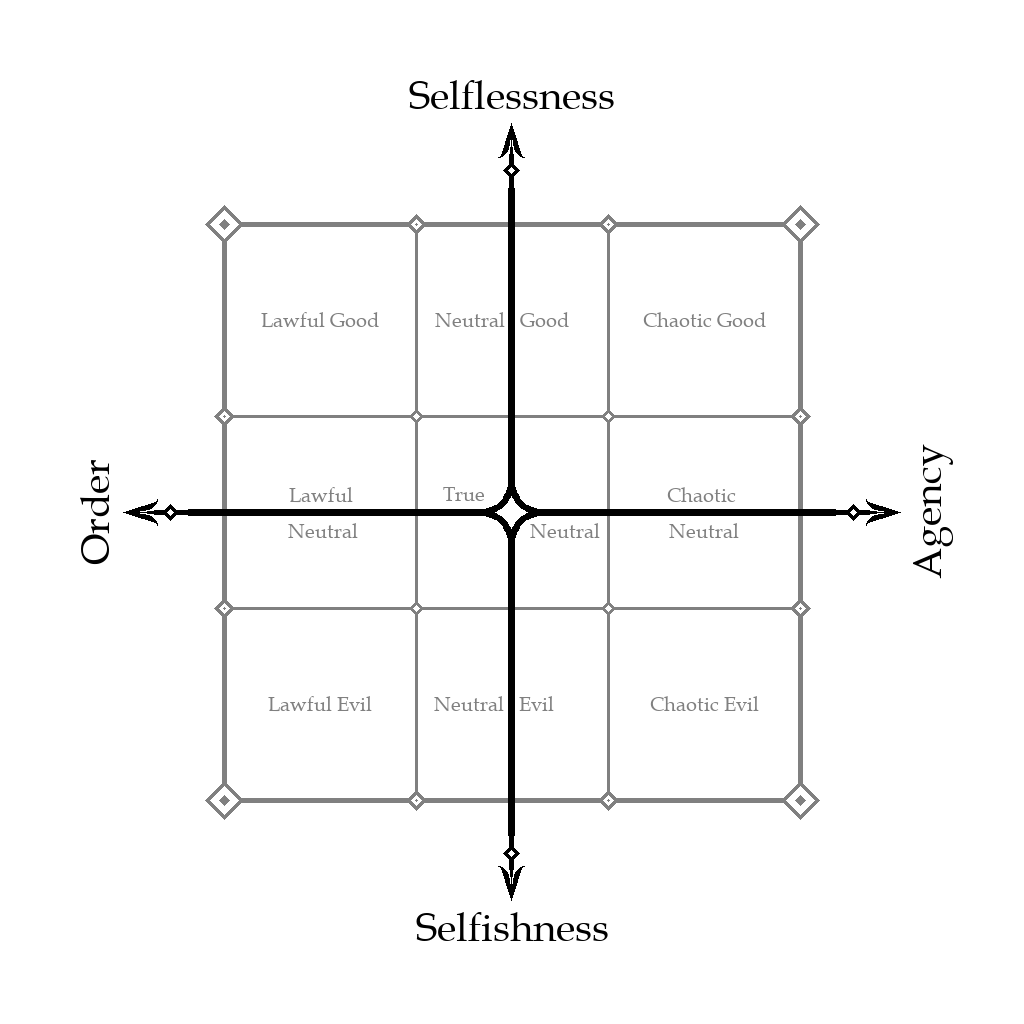Alignment Demystified (DnD Other)
Ever since the advent of the 9 alignments, arguments have sprung up across the internet debating the alignment of various fictional characters outside of Dungeons & Dragons. Alignment is often overcomplicated and improperly applied to these characters. This page serves to demystify alignment by reframing it into easier to concieve terms.
One thing to keep in mind when debating alignment is that alignment was primarily constructed for the world of D&D. In the real world and many fictional worlds, we deal with something called moral relativism that makes such arguments outside of the context of D&D complex and difficult. However, in the cosmology of D&D, the concepts of "good", "evil", "law", and "chaos" have metaphysical manifestations in the forms of the outer planes and their denizens (angels, devils, demons, etc.). A creature like a devil is ontologically evil— if it were to ever somehow stop being evil, it would cease to be a devil.
Alignment currently functions on two axes: good/evil and law/chaos. To determine the alignment of a character, one must first determine where that character lies on those axes.
- Good vs. Evil
Instead of dealing with such vast concepts, let's instead reframe these things in terms of motivation and behavior. A good character generally puts the wellbeing and interests of others before themselves. They exhibit a trait of selflessness. On the other hand, an evil character is selfish. They predominantly put their own interests and wellbeing before others.
- Law vs. Chaos
Independent of good and evil, we have law and chaos, which we also reframe. A lawful character believes in participating in an ordered system or hierarchy, while a chaotic character desires to be unbound and have agency and independence.
Reframing alignment in this way, suddenly the bottom third of the alignment chart is opened up significantly for what characters can be played in a group without being disruptive. A character can easily be selfish and desire agency (chaotic evil) without being a senseless killer.
Back to Main Page → 2.5e Homebrew → 2.5e Other
Back to Main Page → 3.5e Homebrew → Other
Back to Main Page → Pathfinder Homebrew → Other
Back to Main Page → 4e Homebrew → 4e Other
Back to Main Page → 5e Homebrew → 5e Other
